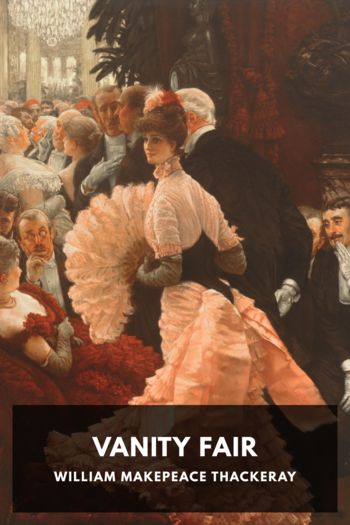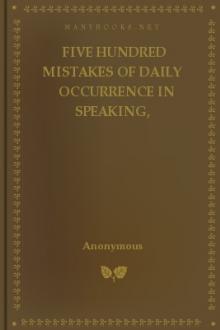Approaching Zero, Paul Mungo [good summer reads TXT] 📗

- Author: Paul Mungo
- Performer: -
Book online «Approaching Zero, Paul Mungo [good summer reads TXT] 📗». Author Paul Mungo
Department computers, and sabotage businesses. He was also accused of breaking
into a National Security Agency computer and stealing important information.
More seriously, he was charged with defrauding the computer company Digital
Equipment Corporation (DEC) and the long-distance phone company MCI, and with
transporting proprietary software across state lines. The software was alleged
to be a copy of DEC’s Security Software System, which made it possible for
Mitnick to break into DEC’s computers and cause $4 million worth of damage.
Mitnick was again arrested in late 1988. He was refused bail by several federal
judges, who said there would be no way to protect society if he were freed. He
was also denied access to a phone while in jail, for fear that he may have
preprogrammed a computer to remotely trigger off damaging programs. In 1989 he
was sentenced to two years in prison.
The decision to deny Mitnick access to a phone was greeted with alarm by an
increasingly nervous hacker community. “We must rise to defend those endangered
by the hacker witch-hunts,” wrote an unnamed contributor to 2600, the hacker
journal. The U.S. Attorney’s office in Chicago, then in the midst of its own
hacker case, responded by saying it intended to prosecute “aggressively.”
The Chicago case, though less publicized than the Mitnick
affair, was the first test of the federal Computer Fraud and Abuse Act. In 1987
local law enforcement agencies began watching a sixteen-year-old hacker and
high school dropout named Herbert Zinn, Jr., who used the handle Shadow Hawk.
The law enforcement officials spent two months investigating Zinn, auditing his
calls and monitoring his activities on computers.
He was subsequently accused of using a PC to hack into a Bell Laboratories
computer in New York, an AT&T computer in North Carolina, another AT&T computer
at Robbins Air Force Base in Georgia, an IBM facility in New York, and other
computers belonging to the Illinois Bell Telephone Company. He was also accused
of copying various documents, including what were called highly sensitive
programs relating to the U.S. Missile Command.
Shadow Hawk was arrested in a raid involving the FBI, AT&T security
representatives, and the Chicago police. He was eventually sentenced to nine
months in prison and fined $10,000.
The Mitnick and Shadow Hawk cases fueled the growing concern among U.S. Iaw
enforcement agencies about hacking. By the end of the decade, the Secret
Service—which is now charged with investigating computer crime, a
responsibility partly, and not entirely amicably, shared with the FBI—was said
to have established a unit for monitoring pirate bulletin boards. A number of
state and local police forces had organized their own computer crime sections,
while separate investigations of the underground were mounted by U.S.
Attorneys’ offices and local prosecutors. By the beginning of the 1990s,
American law enforcement agencies had begun paying extraordinary attention to
computer crime.
Across the Atlantic, away from the prying eyes of the American authorities, the
biggest international gathering of hackers ever organized took place in
Amsterdam in early August 1989.
The assembly was held in the seedy confines of the Paradiso, a former church
that had been turned into a one-thousand-seat theater. The Paradiso was the home
of Amsterdam’s alternative culture; it specialized in musical events,
underground exhibits, and drug parties. The Galactic Hacker Party—or, more
grandly, the International Conference on the Alternative Use of Technol-gy brought together some 400 to 450 hackers, hangers-on, journalists, and,
inevitably, undercover cops, to swap stories, refine techniques, gather
information, or simply enjoy themselves.
The conference took place on all three floors of the Paradiso. On the top
floor, above what had been the nave of the church, participants were provided
with computers to play with. (Their popularity decreased after one wag
programmed them to flash,
THIS MACHINE IS BEING MONITORED BY THE DUTCH POLICE, when they were turned on.)
The ground floor, the theater itself, was reserved for speakers and
demonstrations; across the back of the stage drooped a white banner emblazoned
with the words GALACTIC HACKER PARTY. The crypts in the basement of the
Paradiso were reserved for partying.
At ten A.M. on Tuesday, August 2nd, the opening day, a large monitor displayed
a computer-generated image of a head of a hacker. “Keep on hacking,” urged the
head in an American accent, as the multinational gathering milled about in the
disorganized way of a crowd that clearly lacked a common language. Then, a
bearded, bespectacled, balding figure shuffled unheralded onto the stage. He
was the keynote speaker, the man who, more than anyone, had given rise to the
whole hacking phenomenon.
At forty-six, Captain Crunch looked strangely out of place among the younger
hackers. It had been eighteen years since he had first come to symbolize the
new technological underground, ten years since he had last been jailed for a
second time for phone phreaking. And here he was in Amsterdam, on a month’s
vacation in Europe, still spreading the word.
He began with a rambling discourse in English about the phone system in the
former Soviet Union, information gleaned on an earlier visit there. Their phone
network, the Captain reported, was old, of mixed origin, and, he suspected, had
been continuously monitored by the KGB. He then began the slow process of
demonstrating the newly established Sov-Am Teleport Union, a telephone link
that connected San Francisco to Moscow via satel lite. Using a phone on the
stage the Captain first dialed San Francisco, where he linked to the Teleport,
and then jumped via satellite to Moscow. Unusually for the Captain, he had a
purpose to his call. He dialed a number in Moscow, where a group of ten hackers
were waiting to address the conference about the underground in Russia.
The Russians then joined a multilingual babble of hackers on the line from a
number of other countries, including Germany, France, Kenya, New Zealand, and
the U.S. The Captain, reveling in his role as prophet for the whole movement,
fielded calls about technology and the ethics of hacking—one caller wanted to
know if it would be right to hack into South African computers at the behest of
the African National Congress—and then related his own phreaking experiences.
The Captain was in Amsterdam representing what has been called the second
generation of hackers. The kids he was talking to, the visitors to the Galactic
Hacker Party, were dubbed the fourth generation. Though they had been separated
by more than a decade in time and by thousands of miles in geography, the
Hacker Party was their meeting place.
The concept of hacker generations was first suggested by Steven Levy, the man
who also outlined the philosophy of “hacker ethics.” In his book Hackers, he
argued that the first generation of hackers was a group of students at MIT in
the 1960s who had access to big, expensive mainframes; worked together to
produce useful, new software; and, in doing so, bent the rules of the
university. More than anything, they believed in freedom of information and
unfettered access to technology. They abhorred security to the extent that they
made sure they could pick every lock in the building they worked in.
The second generation of hackers, according to Levy, were people like Captain
Crunch and Steve Wozniak, as well as the other members of the Bay Area’s
Personal Computer Company
and its successor, the Homebrew Computer Club. These were the people who
intuitively believed that the way to drive technology forward was to make the
specifications for their machines freely available, a concept known as open
architecture. They were hardware hackers, and their achievement can now be seen
everywhere in the generality of the ubiquitous PC standard.
Each decade has brought a different twist of geography and
motivation to the various generations of hackers: the 1960s hackers, the
first generation, were based on the East Coast, developing software; the
second-generation, 1970s hackers were on the West Coast, developing hardware.
The next generation, the third, was based both in North America and Europe.
These were the kids who had inherited the gift of the personal computer and
were copying and selling the first computer games. Their motivation was often
a fast buck, and their instincts entirely commercial.
The Captain’s audience, the fourth generation, had inherited a world in which
technology was rapidly converging around the new standard-bearer, the IBM PC.
This new generation shared the same obsessions as their predecessors, but now
that they had everything that technology could offer, they hacked merely for
the sake of hacking. Hacking had become an end in itself.
For many of the fourth generation, technology was merely a relief from boredom
and monotony. Hacking was a pastime that varied the routine of school or
university, or a dead-end job. To become proficient, they would typically
devote most of their waking hours—80 to 100 hours a week was not uncommon,
more time than most people give to their jobs—to working on PCs and combing
the international information networks. Hackers, for the most part, are not
those with rich and rewarding careers or personal lives.
Of course, hacking is also a form of rebellion—against parents, schools,
authority, the state, against adults and adult regulations in general. The
rebellion is often pointless and unfocused, often simply for the sake of
defying the system. Ultimately there may
be no point at all; it has simply become a gesture to ward off boredom or,
perhaps, the banality of ordinary life in a structured society.
The higher principles of hackers were summed up in a draft declaration prepared
by the Galactic Hacker Party’s organizers and circulated among delegates for
their signatures. “The free and unfettered flow of information is an essential
part of our fundamental liberties, and shall be upheld in all circumstances,”
the document proclaimed. “Computer technology shall not be used by government
and corporate bodies to control and oppress the people.”
The language echoed the beliefs of the second generation of hackers. But the
conversation among the kids in the crypt and in the halls belied the rhetoric
of the organizers. For Lee Felsenstein, an American visitor, it was a
disturbing experience. Lee was a confirmed second-generation hacker, one of the
original founders of the Homebrew Computer Club. He remained a staunch believer
in freedom of speech and an avid supporter of individual rights. But he felt
that the fourth-generation hackers were “underage and underdeveloped”; they
displayed “negative social attitudes.” Hacking, he said, had degenerated from
being a collective mission of exploration into an orgy of self-indulgence.
For Lee, evidence of degeneracy included the hackers who boasted about breaking
into American computers to steal military information and then selling it to
the KGB. He was also disheartened to learn about the exploits of the
VAXbusters, a German group that had broken into NASA and over a hundred other
computers worldwide by exploiting a loophole in the operating system of Digital
Equipment Corporation’s VAX computers. The VAX, very powerful but small
machines, are widely used in science laboratories, universities, and military
installations.
More to the point, from Lee’s point of view, the fourth generation of hackers
was becoming involved in a new facet of computer programming, one that
threatened everything he believed in. Far from increasing access and creating
freedom for computer users, this new development could only cause the door to
be slammed shut on access, for freedom to be replaced by fortresslike security.
During the Galactic Party, a number of hackers had been demonstrating new
programs called computer viruses.
Lee left Amsterdam muttering about Babylon and ancient Rome. John Draper, alias
Captain Crunch, was less bothered. He spent the remainder of his vacation
traveling around Germany, taking his hacking road show to eighteen different
cities.
There was, in fact, nothing new about computer viruses except their existence.
Viruses had been foreseen in science





Comments (0)